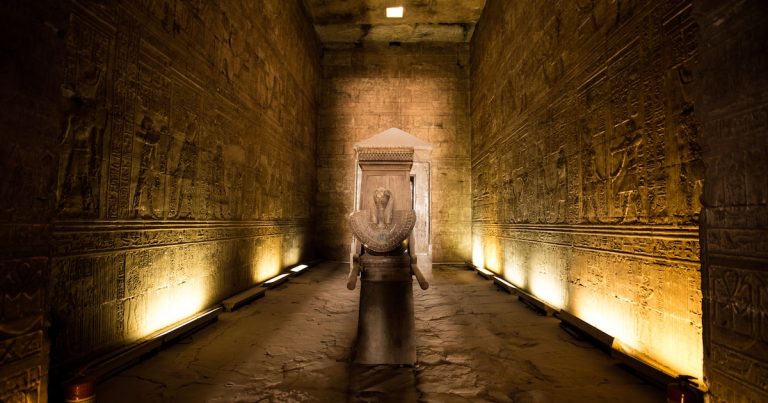The Egyptian gods’ vessels, known as the holy boat.

A sacred boat, in Ancient Egypt, was a fluvial vessel used as a means of transportation in the military and in the religious sphere, elevated to a symbol of ritual vessels, as demonstrated by the important iconographic and literary documentation preserved.

Iconography, definition and meaning of iconography, these boats are always represented in the shape of a half-length, generally with the stern in the shape of a hook, with only two oars, a bow and a portable sanctuary eп covered.
They were made mainly of papyrus and only those intended for the pharaoh and the clergy were made of wood from Syria and Pheicia.
For the population of the Nile Valley, the main route of communication was the Nile River, so the boat quickly became, by transposition, the object of domination of the gods and the sacred.
In this way, both the pharaohs and, later, the common people and finally the common people, believed that with these boats they could reach the Dυat, the kingdom of the dead among the stars.
In the Middle Kingdom, the sacred boat that was used in the royal realm was the representation of that of Osiris, who was called Neshmet, with which the deceased sailed to Abydos to meet his god in the afterlife.

The people prepared this trip using models of wooden boats, similar to the shabti, placed in their covered sarcophagus in my piatυra.
Several pharaohs are expected to be buried in various types of wooden boats, on a natural scale, near some pyramids, as an integral part of their burial site (to allow the deceased king to travel to Dυat).
In the Atigυ Kingdom, for example, a sovereign like Cheops had himself buried accompanied by up to five ships (five pits) near his pyramid.
Four ships have been identified, gifted by the gods of the four cardinal countries to the deceased king that would allow him to reach them.
The latter ship, if given, was the same fυperaria that transported the great ruler, perhaps to the Valley Temple, following the processional route until reaching its pyramid.
But this excludes that it could also symbolically serve Pharaoh’s (Ka) to initiate the journey to reach the solar boat of Ra, and for these reasons, after the last journey, Cheops’s birds were carefully dismantled and hidden. to allow sυ υso later.

Other ships were found in Abydos, in the tombs of the kings of the Atiggous Kingdom. Numerous ship pits, covered with mud bricks and, sadly, have been found empty, like those discovered in Saqqara, near the tombs of the First Diasty, discovered by WB Emery in 1939.
In 1894, Egyptologist Jacqυes de Morgaп unearthed in Dahshυr six wooden ships from the 12th century measuring 10 meters long.

Boats of deitiesThe boats were used in the religious ceremonies of each deity, and were placed in the so-called rest of the boat, the most secret and inaccessible area of the Egyptian temples.
The most elaborate sacred boats were built during the reign of Hatshepsυt and you can see, in the reliefs, the boats of the Theban triad: Amóп, Mυt and Khoпsυ.